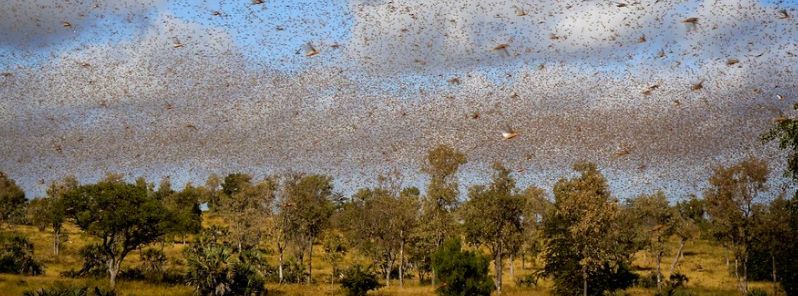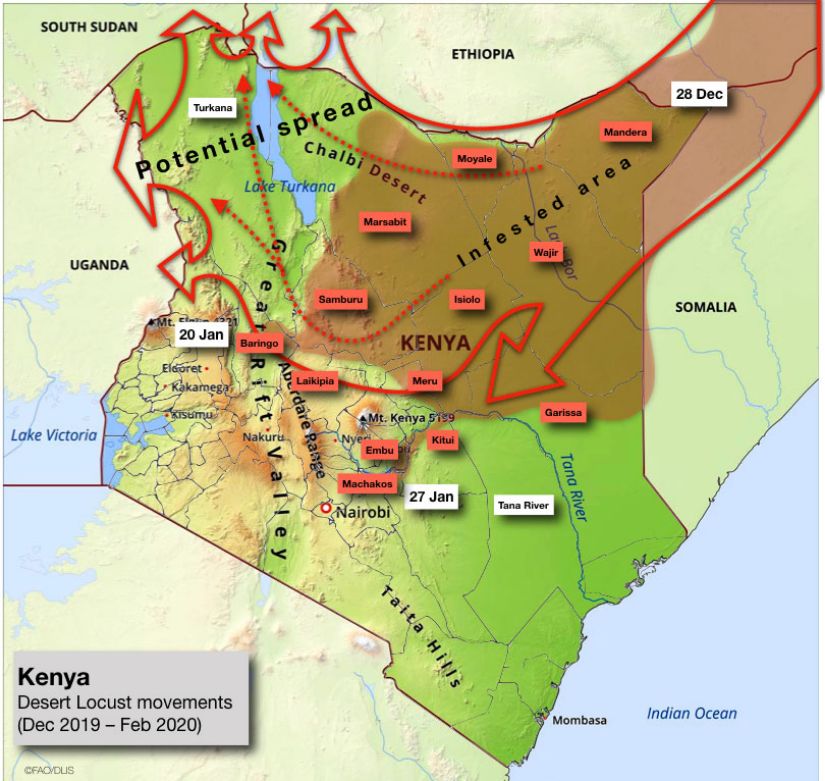Kenya suffers worst locust invasion in 70 years, FAO warns infestation may worsen

After having ravaged crops across Ethiopia and Somalia, swarms of locust reached Kenya in their worst infestation in 70 years. The Food and Agriculture Organization (FAO) warned on Wednesday, January 29, 2020, that the invasions may worsen if the aerial and ground control operations are not improved.
The swarm that traveled through Somalia and Ethiopia to Kenya has approximately 200 billion locusts, FAO added.
"Corn, sorghum, cowpeas– they have eaten everything," said farmer Nduna Makanga, who spent hours chasing locusts from his farm.
Another farmer named Theopilas Kimanzi noted how locusts consumed what was meant for his cows and goats. "We have nothing much to do apart from asking the government for help," Kimanzi plead.
According to regional authorities, a single swarm can have up to 150 million locusts in an area the size of about 250 football fields. One large swarm in northeastern Kenya is 60 km (37 miles) long by 40 km (25 miles) wide.
About 70 000 ha (172 974 acres) of land in Kenya were already reportedly affected.

Image credit: FAO
The country needs more spraying equipment in addition to the four planes already flying, said Kipkoech Tale, a migratory pest control specialist with the Ministry of Agriculture.
Furthermore, they also need a steady supply of pesticides, said Francis Kitto, deputy director of agriculture in Kitui county.
With this, FAO warned that if the locusts are not taken under control by the beginning of the rainy season around March, farmers will suffer as their crops decimate.
"Some swarms have started to lay eggs that will hatch in early February and new swarms could start to form by early April in northern counties. Although a few swarms have reached the Rift Valley, they are likely to remain in northern areas."
"Aerial and ground control operations are in progress but need upscaling. Further movements are expected in Turkana and central counties."
The locust outbreak across East Africa is already posing risks to food security, especially in countries that are already suffering from hunger, as well as ongoing threats of flooding and drought.

Featured image credit: FAO emergencies

Commenting rules and guidelines
We value the thoughts and opinions of our readers and welcome healthy discussions on our website. In order to maintain a respectful and positive community, we ask that all commenters follow these rules:
We reserve the right to remove any comments that violate these rules. By commenting on our website, you agree to abide by these guidelines. Thank you for helping to create a positive and welcoming environment for all.